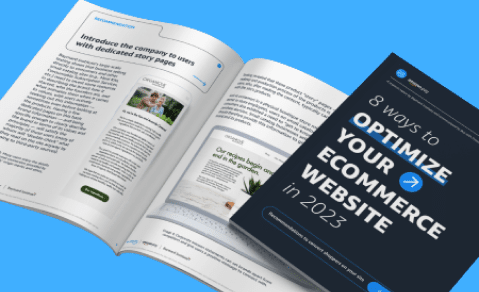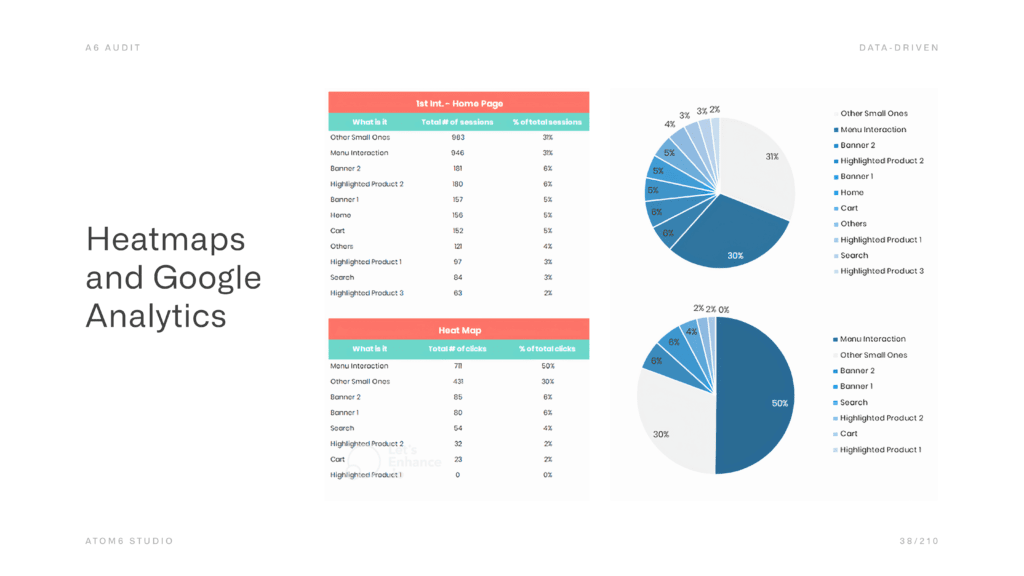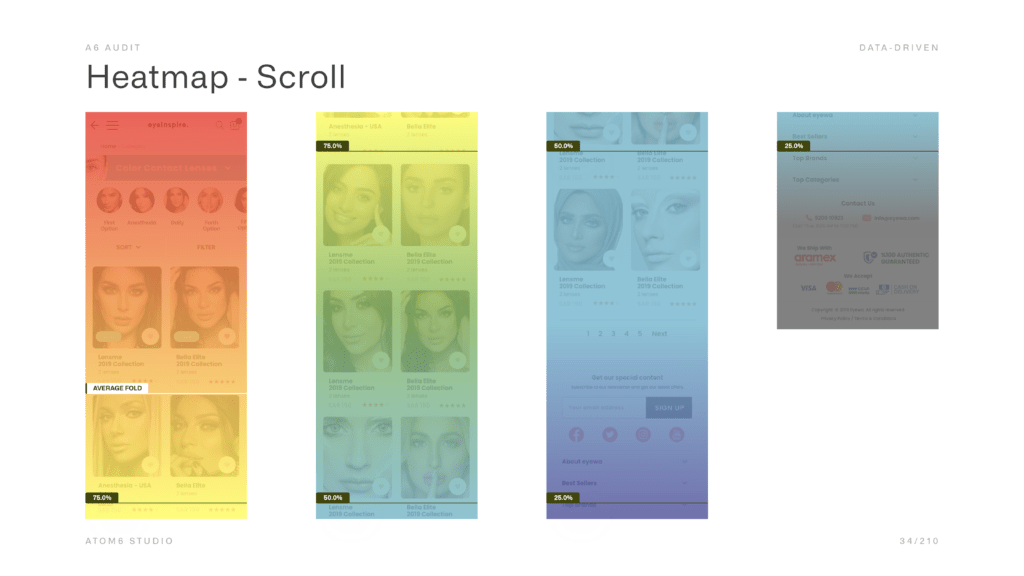By Gus Novloski
“No high-quality product has been created by anyone alone, working with other people and ideas, including divergent ideas, is of extreme importance to achieve excellent results.”
In today’s digital landscape, designers have countless possibilities when it comes to choosing the elements and style of their work. However, relying solely on subjective opinions, whether from designers or customers, is no longer sufficient. It is crucial for designers to back their suggestions with solid research and data-driven insights. In this article, we will delve into a comprehensive methodology for auditing and improving an e-commerce website, leveraging the power of theory and data to drive success.
In this article, I will describe in detail the methodology I applied to an e-commerce website project with more than half a million accesses a month. In this specific e-commerce case, the importance of usability and interface eventually are taken to the extreme, because any little modification can bring direct results in sales.
Methodology: A Seven-Step Approach
Step 1 – Current Version and Gathering Initial Ideas
To kick off the project, it’s important to thoroughly analyze the existing e-commerce website and engage in conversations with the client to understand their goals and initial ideas. This forms a solid foundation for improvement suggestions. While incorporating professional expertise, it’s crucial to listen to the client’s experiences and ideas, as they possess valuable market knowledge.
In spite of my professional experience and expertise, I need to listen to the client’s experiences and ideas; after all, he is the one that knows his market and his region like no one else. Moreover, at this point, it is good to remember that a design project always involves more than one person. No high quality product has been created by anyone alone, working with other people and ideas, including divergent ideas, is of extreme importance to achieve excellent results

From the initial concept, which can already exist or be just an idea of the company, there are paths that can take the site, for each page and element. These ideas are represented by arrows. In each of the next stages, some ideas will become more consolidated, others will be eliminated, and new ideas will emerge. At the end of the process, we should find few arrows, which represent ideas focused on the objectives of the client. With each step, we get closer to specific project responses, based on theory, feedbacks, data interpretation and creativity.
Step 2 – Best Practices Research
To shape improvement ideas, it’s essential to explore best practices in e-commerce, both within the same business model and across successful companies in different areas. This research provides insights and inspiration for possible enhancements. For example, studying the checkout process of renowned e-commerce platforms like Amazon Pay Recommendations and the Baymard Research Institute can offer valuable guidance.

With a mix of Similar Companies with huge success, user experience institutes, best practices and amazing e-commerces (not same exactly business) we will achieve great results. Sometimes we have to break best practices and that’s why benchmarking and data analysis is important
Step 3 – Benchmarking Analysis
Analyzing competitors’ actions in the market is a crucial step in the audit process. A pragmatic examination of critical elements for the purchasing process, such as product search usability, menu navigation, product page layout, and effective call-to-action buttons, helps identify common strengths and weaknesses.
An example, in this case, was to understand the user’s flow when interacting with the menu of one of the best e-commerces at that moment, ASOS.

Step 4 – Google Analytics Data
Leveraging data from Google Analytics is instrumental in understanding user behavior on the website. Analyzing behavior maps helps identify frequently visited pages, user flow patterns, and points of exit. This data-driven approach allows for targeted improvements, such as optimizing the checkout process based on insights that reveal conversion bottlenecks.
As a real practical example, it should be noted, in this case, that half of the people who came to the Checkout did not complete the purchase process, perhaps because of the amount of forms, lack of clarity and lack of evidence that the process is safe, among others. So, what does that tell us? That the first priority to be improved should be exactly at the Checkout!

Step 5 – Heatmap Analysis
Heatmaps provide visual representations of user interactions, highlighting areas of focus on each page. By examining heatmap data, including click patterns and user attention, it becomes clear which elements require immediate attention. Prioritizing improvements based on actual user interactions maximizes the impact of design changes

The data indicates that nearly half of the clicks were made in the Menu when we cross-referenced the Google data with the heatmap data.

Here I must highlight a point that may seem confusing, but the development of a digital product has to be iterative and sometimes we collect information that makes us return to previous steps. In this case, we need to ensure that, in the process of Best Practices Research and Benchmarking Analysis, due attention has been given to the interaction with the Menu and the Checkout process, once the data analysis makes us understand that both are important for increasing the number of purchases of the products on the website by user.
Another application of the heatmap is to learn which areas of the site the user is visiting, so we focus on them first. In this case, it is noted that most users visit only the first part of the site. So what is the conclusion? To focus the buttons and links for actions, aligned to the business priorities of the company, in the first part of the site. In addition, to make clear what the company comes from and what products and delivery solutions.

We reached to the point where we have most of the priorities set. The next step is to watch recordings of real people using the product. Remember that we now have an idea of what to look for and what to focus on when watching these recordings.
Step 6 – Usability Recordings
Watching recordings of real users interacting with the website uncovers valuable insights into their behavior, revealing potential usability issues and areas for improvement.
We can better specify the interactions, especially those of users who finalize purchases, in order to identify serious problems, such as users attempting to click on non-button elements or using the form incorrectly. After all, if the user cannot utilize any element on the website, the responsibility lies entirely with the designer. The website must be intuitive and easy to navigate. The website must be intuitive and easy to use.
Step 7 – Final Suggestions and Implementation
By this stage, the previous steps have narrowed down the pool of suggestions to specific, actionable improvements. These suggestions should be presented concisely, supported by mockups and practical examples, clearly communicating the objectives and benefits of each proposed change. A/B testing can then be conducted to refine the ideas further.
In order to present the new suggestions to the client, it must be concise and practical, so that the improvements and why they were made is presented. As well as the objectives of each item. As an example, we have the process of checkout of this e-commerce.

Next Steps
By applying this theory and data-driven methodology, e-commerce websites can undergo thorough audits that lead to focused and effective improvements. Remember, the process is iterative, and ongoing data collection and analysis are vital for achieving long-term success. Embrace a mindset that combines creativity with research and data, empowering designers to deliver exceptional user experiences that drive tangible results.
So what is the next step? The next step is to implement these improvements and begin to collect the data related to opinions that really matter: those of users and customers. Collect data and return to the beginning of the process, narrowing it more and more to find specific solutions, with technical foundation and that bring actual results.
If you’re looking to apply these improvements to your e-commerce website, feel free to contact us for assistance.

